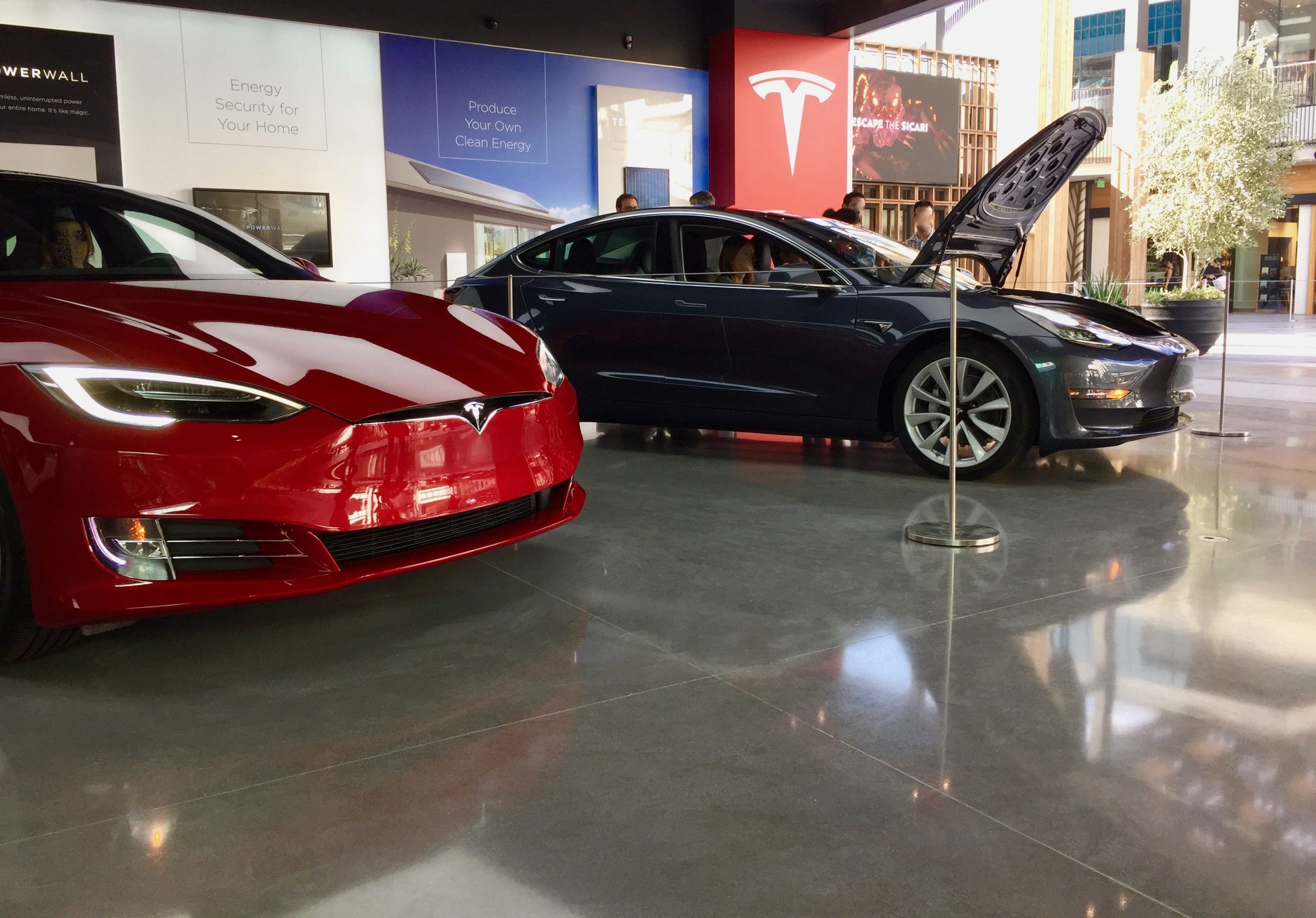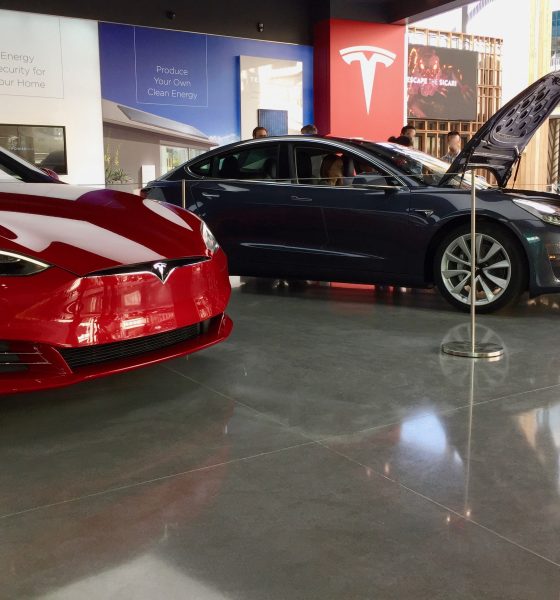

News
Tesla’s win in Michigan marks a point of no return for traditional auto
After resisting Tesla for years, the heart of American auto, Michigan, finally allowed the electric car maker to establish a foothold in the state. It was a hard-fought battle for Tesla, and a victory well worth more than CEO Elon Musk’s one-word celebration on Twitter. But at the same time, Tesla’s settlement with Michigan, which would allow the company to sell and service its cars in the state, marks a point of no return for traditional auto.
It may not be evident now, but from this point on, it will be twice as difficult for states to resist disruptive new EV makers that do not follow a traditional dealership sales model. This means that even other carmakers such as Rivian will likely have a clear path forward in their expansion into the United States’ auto market, absent of the direct sales roadblocks that the Elon Musk-led company has dealt with for years.
Michigan is considered the heart of the US auto industry, and for good reason. The country’s motoring history was written within the state’s borders, and iconic companies that changed the industry, such as Ford, call Michigan their home. Yet, for all its dedication to the car industry, Michigan has also been very resistant to Tesla, preventing the electric car maker from selling its vehicles in the state due to the company’s direct sales strategy.
Tesla’s difficulties in Michigan were a painful reminder that the company’s goal of transitioning the transportation industry towards sustainability would be marred with difficulties left and right, signified by the state’s dealer franchise laws. This is one of the reasons why the company’s settlement with the state is so important. Daniel Crane, a University of Michigan law professor who specializes in antitrust and regulatory issues, explained these points in an interview with Automotive News.
“The handwriting’s on the wall for the franchised dealer as the exclusive way consumers interact with car companies. It’s pretty clear it’d be impossible for the state to deny someone else; it paves the way for any new EV company that doesn’t want to use traditional dealerships.”
“The legacy companies can’t continue forever to use a dealer model from the 1930s. Being required to use only that, I think, is a competitive disadvantage. They’ll have to find a way to get flexibility in their distribution method, or they’ll be left behind,” he said.
The dealer model deserves some recognition, as the United States’ auto industry would likely not have gotten this far without it. Yet in the age of electrification, dealerships, which are known for their flexible pricing strategies and reliance on regular vehicle maintenance, are starting to become outdated. Tesla is the living representation of this, as the company’s cars are priced like tech devices, and its vehicles require far less maintenance compared to internal combustion cars.
One key takeaway from Tesla’s conquest and subsequent victory in Michigan is the fact that the electric car maker is only the first of many. The state has allowed the company to sell and service its cars within its borders, and it will be hard-pressed to not do the same for other automakers. Tesla may be leading the charge, after all, but it is not alone. There’s Rivian, which is also planning on adopting a non-dealership sales model, and more are likely coming. By allowing Tesla to sell and service its cars within the state, Michigan has just accelerated the industry’s transition to sustainability.
Very few may see it now, but through this little settlement with Tesla, the US auto industry may have just passed the proverbial point of no return.
Tesla’s recent settlement with the state of Michigan can be read below.
Tesla-MI-Joint Stipulation and Motion for Entry of Dismissal 1-22-20 679161 7 by Simon Alvarez on Scribd

News
Elon Musk’s Grokipedia surges to 5.6M articles, almost 79% of English Wikipedia
The explosive growth marks a major milestone for the AI-powered online encyclopedia, which was launched by Elon Musk’s xAI just months ago.

Elon Musk’s Grokipedia has grown to an impressive 5,615,201 articles as of today, closing in on 79% of the English Wikipedia’s current total of 7,119,376 articles.
The explosive growth marks a major milestone for the AI-powered online encyclopedia, which was launched by Elon Musk’s xAI just months ago. Needless to say, it would only be a matter of time before Grokipedia exceeds English Wikipedia in sheer volume.
Grokipedia’s rapid growth
xAI’s vision for Grokipedia emphasizes neutrality, while Grok’s reasoning capabilities allow for fast drafting and fact-checking. When Elon Musk announced the initiative in late September 2025, he noted that Grokipedia would be an improvement to Wikipedia because it would be designed to avoid bias.
At the time, Musk noted that Grokipedia “is a necessary step towards the xAI goal of understanding the Universe.”
Grokipedia was launched in late October, and while xAI was careful to list it only as Version 0.1 at the time, the online encyclopedia immediately earned praise. Wikipedia co-founder Larry Sanger highlighted the project’s innovative approach, noting how it leverages AI to fill knowledge gaps and enable rapid updates. Netizens also observed how Grokipedia tends to present articles in a more objective manner compared to Wikipedia, which is edited by humans.
Elon Musk’s ambitious plans
With 5,615,201 total articles, Grokipedia has now grown to almost 79% of English Wikipedia’s article base. This is incredibly quick, though Grokipedia remains text-only for now. xAI, for its part, has now updated the online encyclopedia’s iteration to v0.2.
Elon Musk has shared bold ideas for Grokipedia, including sending a record of the entire knowledge base to space as part of xAI’s mission to preserve and expand human understanding. At some point, Musk stated that Grokipedia will be renamed to Encyclopedia Galactica, and it will be sent to the cosmos.
“When Grokipedia is good enough (long way to go), we will change the name to Encyclopedia Galactica. It will be an open source distillation of all knowledge, including audio, images and video. Join xAI to help build the sci-fi version of the Library of Alexandria!” Musk wrote, adding in a later post that “Copies will be etched in stone and sent to the Moon, Mars and beyond. This time, it will not be lost.”
News
Tesla Model 3 becomes Netherlands’ best-selling used EV in 2025
More than one in ten second-hand electric cars sold in the country last year was a Tesla Model 3.

The Tesla Model 3 became the most popular used electric car in the Netherlands in 2025, cementing its dominance well beyond the country’s new-car market.
After years at the top of Dutch EV sales charts, the Model 3 now leads the country’s second-hand EV market by a wide margin, as record used-car purchases pushed electric vehicles further into the mainstream.
Model 3 takes a commanding lead
The Netherlands recorded more than 2.1 million used car sales last year, the highest level on record. Of those, roughly 4.8%, or about 102,000 vehicles, were electric. Within that growing segment, the Tesla Model 3 stood far ahead of its competitors.
In 2025 alone, 11,338 used Model 3s changed hands, giving the car an 11.1% share of the country’s entire used EV market. That means more than one in ten second-hand electric cars sold in the country last year was a Tesla Model 3, Auto Week Netherlands reported. The scale of its lead is striking: the gap between the Model 3 and the second-place finisher, the Volkswagen ID3, is more than 6,700 vehicles.
Rivals trail as residual values shape rankings
The Volkswagen ID.3 ranked a distant second, with 4,595 used units sold and a 4.5% market share. Close behind was the Audi e-tron, which placed third with 4,236 registrations. As noted by Auto Week Netherlands, relatively low residual values likely boosted the e-tron’s appeal in the used market, despite its higher original price.
Other strong performers included the Kia Niro, the Tesla Model Y, and the Hyundai Kona, highlighting continued demand for compact and midsize electric vehicles with proven range and reliability. No other model, however, came close to matching the Model 3’s scale or market presence.
News
Tesla Model Y Standard Long Range RWD launches in Europe
The update was announced by Tesla Europe & Middle East in a post on its official social media account on X.

Tesla has expanded the Model Y lineup in Europe with the introduction of the Standard Long Range RWD variant, which offers an impressive 657 km of WLTP range.
The update was announced by Tesla Europe & Middle East in a post on its official social media account on X.
Model Y Standard Long Range RWD Details
Tesla Europe & Middle East highlighted some of the Model Y Standard Long Range RWD’s most notable specs, from its 657 km of WLTP range to its 2,118 liters of cargo volume. More importantly, Tesla also noted that the newly released variant only consumes 12.7 kWh per 100 km, making it the most efficient Model Y to date.
The Model Y Standard provides a lower entry point for consumers who wish to enter the Tesla ecosystem at the lowest possible price. While the Model 3 Standard is still more affordable, some consumers might prefer the Model Y Standard due to its larger size and crossover form factor. The fact that the Model Y Standard is equipped with Tesla’s AI4 computer also makes it ready for FSD’s eventual rollout to the region.
Top Gear’s Model Y Standard review
Top Gear‘s recent review of the Tesla Model Y Standard highlighted some of the vehicle’s most notable features, such as its impressive real-world range, stellar infotainment system, and spacious interior. As per the publication, the Model Y Standard still retains a lot of what makes Tesla’s vehicles well-rounded, even if it’s been equipped with a simplified interior.
Top Gear compared the Model Y Standard to its rivals in the same segment. “The introduction of the Standard trim brings the Model Y in line with the entry price of most of its closest competition. In fact, it’s actually cheaper than a Peugeot e-3008 and costs £5k less than an entry-level Audi Q4 e-tron. It also makes the Ford Mustang Mach-E look a little short with its higher entry price and worse range,” the publication wrote.








